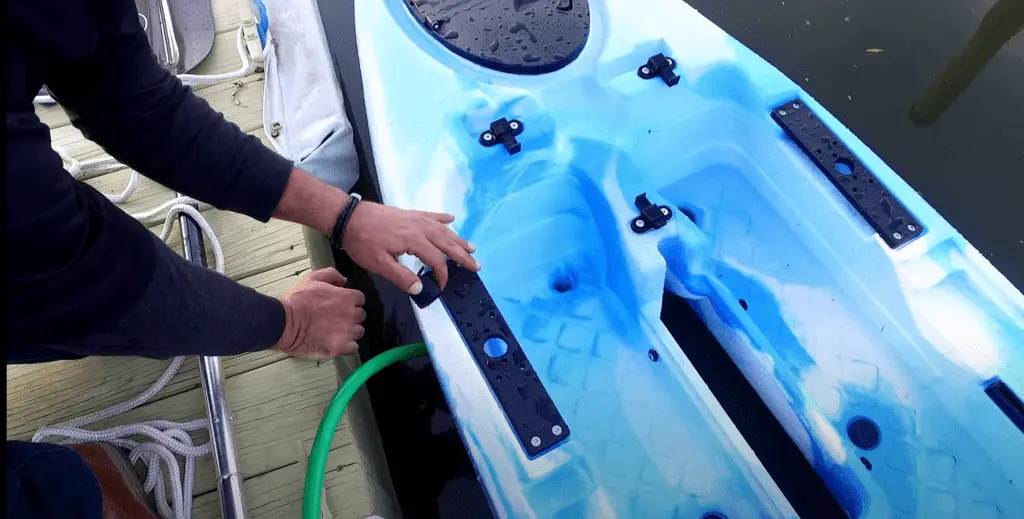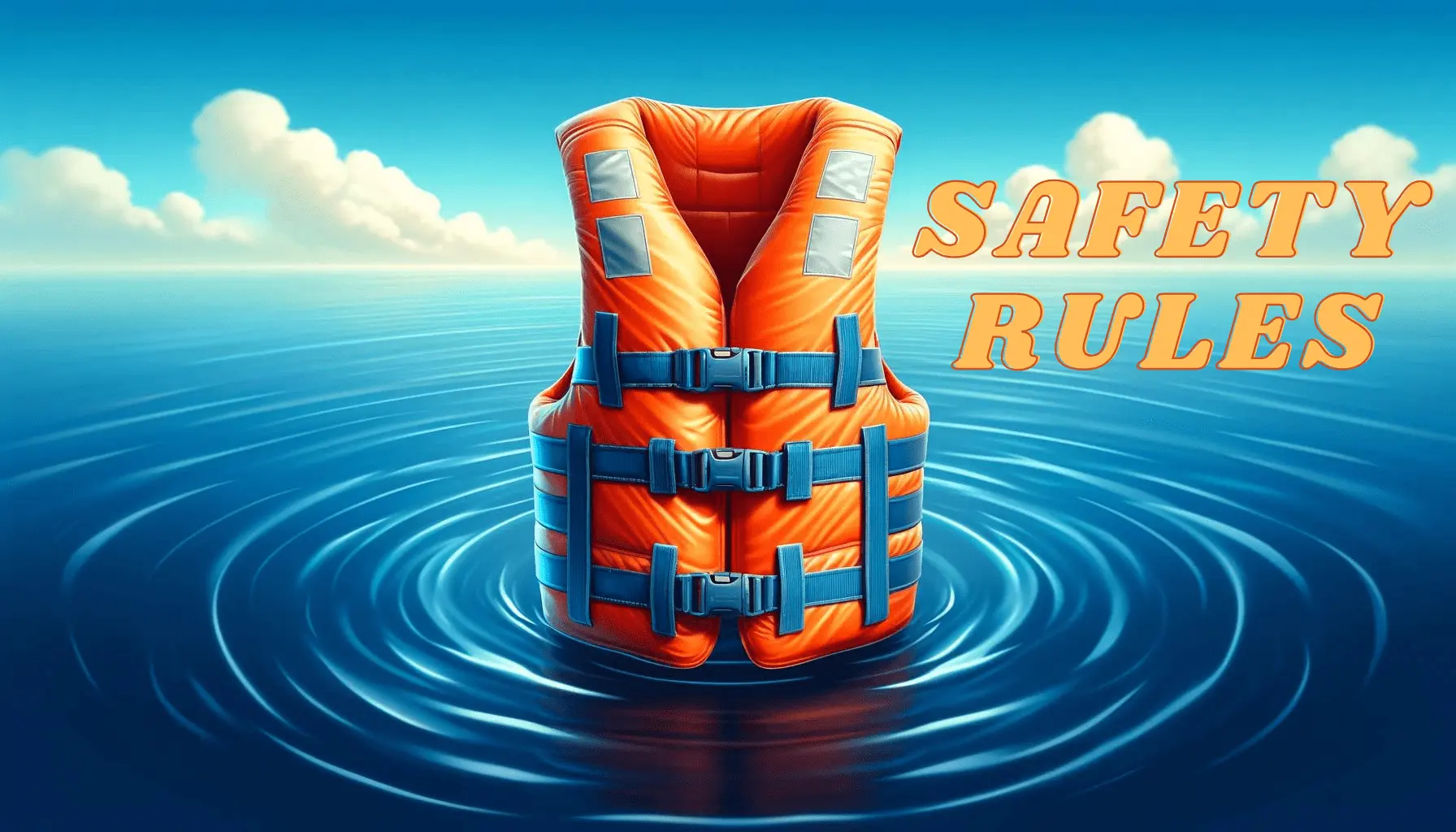Self-bailing kayaks are a revolution in kayak engineering, designed with a cutting-edge drainage system that redefines the paddling experience. Unlike traditional kayaks, self-bailing kayaks work by employing a series of ports or holes placed in the hull, allowing water to flow out autonomously. Boaters no longer need to stop and manually bail water, making them an ideal choice for navigating turbulent waters where splashes and currents can fill a boat quickly.
Their functionality is critical in whitewater scenarios, as they prevent the kayak from becoming waterlogged and unstable. However, it’s pertinent for enthusiasts to understand that while they excel in rapid-moving waters, on serene flatwater, paddlers may find their feet and seats a bit more submerged than expected. This is due to the inherent design allowing water ingress through those same holes meant for bailing.
With the evolution of the kayak drainage system, these kayaks have shifted from niche to necessary for certain water activities. For instance, the Star Paragon IK’s 2019 version offered a self-bailing feature through the inclusion of hull holes, diverging from the traditional models, and framing the question of how self-bailing kayaks work. It’s this innovative approach that solidifies their standing as a formidable tool for the avid kayaker.
Key Takeaways
- Self-bailing kayaks automatically expel water through holes in the hull, enhancing paddling in moving water.
- Designed for whitewater use, they may still result in a wet ride on calm water due to the water ingress via bailing ports.
- The self-bailing feature provides safety benefits by preventing capsizing from water accumulation.
- Inflatables with this feature, like the 2019 Star Paragon IK, highlight the functional and design evolution of kayaks.
- Adopters of self-bailing kayaks must align their expectations with the environments suited for such craft: primarily swift, moving waters.
Understanding the Self-Bailing Kayak Design
The development of the self-bailing kayak design has revolutionized the paddling world by integrating advanced features that enable kayakers to venture into dynamic waters with confidence. To grasp how self-bailing kayaks work, one must delve into the specifics of their construction, which equips these vessels with unique capabilities to handle the challenges of both whitewater rapids and serene lakes.
The Basics of the Self-Bailing Mechanism
Self-bailing kayak features include an array of drainage holes situated along the perimeter of the kayak’s hull. These strategically placed openings serve a crucial function; they allow water that enters the cockpit during rough paddling conditions to exit without the need for manual intervention. A notable example of this innovation is the 2019 version of the Star Paragon IK, designed to optimize water expulsion while navigating tumultuous flows. However, it’s important for enthusiasts to recognize that these holes can also permit water ingress when the kayak is stationary or traversing calm waters, translating to a potentially damp experience.
How Self-Bailing Kayaks Manage Water Inflow and Outflow
Self-bailing kayaks are often constructed with robust materials such as commercial-grade reinforced PVC, which provides the essential rigidity and durability required to endure the pressures of wild water excursions. Noteworthy is the Kokopelli Recon Self-Bailing kayak, illustrating effective water management through the fusion of high-strength materials and design ingenuity. A significant design element is the catamaran-style hull, delivering remarkable primary stability and capacity to adapt to varying water levels, while the floors are inflated high enough to keep paddlers above the water that may come in. The placement and size of the drainage holes are carefully calibrated to balance inflow against outflow, ensuring the kayaker remains as dry as possible considering their weight and the kayak’s capacity.
Comparing Self-Bailing Kayaks to Traditional Kayaks
The self-bailing kayak advantages are most apparent when contrasted with traditional kayak counterparts. Their self-draining capabilities make them superior in managing sudden water influx during whitewater adventures, and they facilitate quicker self-rescue scenarios. Conversely, conventional kayaks often necessitate manual procedures, such as bailing or pumping, to remove excess water. This comparison highlights the benefits of self-bailing kayaks for specific environments, like choppy and swift waters. On the other hand, in the context of leisurely paddles on placid lakes, the persistent seepage through drainage holes in self-bailing kayaks vs traditional kayaks can result in a wetter ride. Additionally, the absence of tracking fins on some self-bailing models may slightly impair their performance in flat water situations, particularly over longer distances.

Benefits and Drawbacks of Self-Bailing Kayaks
The allure of the self-draining magic of self-bailing kayaks draw paddlers who face dynamic and unpredictable waters. This innovative kayak drainage system offers enhanced safety benefits and simplified maintenance, positioning these kayaks as a staple for the adventurous. However, understanding the full scope of self-bailing kayak features requires an exploration of the built-in trade-offs that affect overall performance and convenience. Let’s dive into the advantages these kayaks offer on water and examine the considerations paddlers should heed regarding dryness and efficiency.
Advantages on the Water: Enhanced Safety and Maintenance
When assessing the benefits of self-bailing kayaks, their safety-enhancing attributes come into sharp focus. The automated expulsion of water sharply reduces the risk of capsizing, a significant concern with traditional kayaks that accumulate water. Such capability is invaluable in chaotic conditions where rapid shedding of water is a life-saving feature. Durability is also a hallmark of these robust watercraft; composed of premium materials like commercial-grade PVC, they stand up to the punishing conditions commonly found in rapids and rocky streams. Moreover, the inherent self-bailing kayak advantages extend post-paddle, with less need for user intervention to evacuate water and debris, simplifying clean-up and storage.
Evaluating Performance: Trade-offs Between Dryness and Efficiency
As we pivot to performance, the self-bailing kayak’s features engender a balancing act between staying dry and maximizing paddling efficiency. In calmer waters, the same orifices that dispel water can invite it in, potentially dampening the experience. Yet, paddlers can circumvent this by adopting specialized wet wear or modifying seating ergonomics. Further, while these kayaks deliver exceptional stability and responsiveness in tumultuous water due to their rigid and buoyant construction, they might not glide as effortlessly on serene lakes or rivers without the aid of tracking fins. The self-bailing kayak advantages demonstrate an optimized design for particular paddling environments; utilizing them where they shine best—whitewater and rough conditions—allows the paddler to extract the most value and performance from their vessel.
Benefits and Drawbacks of Self-Bailing Kayaks
What is a self-bailing kayak?
A self-bailing kayak is equipped with a drainage system that allows water to exit through holes in the kayak’s hull. This design is especially useful in whitewater conditions, as it prevents the kayak from filling with water and potentially capsizing.
How does the self-bailing kayak’s drainage system work?
The drainage system works through strategically placed holes or ports in the kayak’s hull or cockpit. When water splashes into the kayak, these holes allow it to drain out, particularly when the kayak is in motion.
What are the benefits of self-bailing kayaks?
Self-bailing kayaks offer enhanced safety as they are less likely to capsize due to water accumulation. They’re easier to maintain since water drains out automatically, and they are more suitable for rough water conditions where rapid water evacuation is essential.
What are the basics of the self-bailing mechanism in kayaks?
The fundamental principle of the self-bailing mechanism is the use of holes at the bottom or sides of the kayak that allow water ingress during rough paddling to automatically drain out when the kayak is moving, keeping the vessel afloat.
How do self-bailing kayaks manage water inflow and outflow?
Self-bailing kayaks typically manage water inflow and outflow through a combination of inflatable floors and strategically placed drain holes. Inflatable floors add buoyancy while the drain holes enable water to escape, thereby preventing flooding.
How do self-bailing kayaks compare to traditional kayaks?
Self-bailing kayaks have the distinct advantage of automatic water drainage, making them ideal for whitewater use where rapid water entry is common. Traditional kayaks, on the other hand, often require manual bailing and are better suited for calm water where water entry is minimal.
What are the advantages on the water for self-bailing kayaks?
The main advantages include enhanced safety, as the self-bailing feature reduces the risk of capsizing. They also require less effort in maintenance, as the drainage system simplifies the cleanup process after use.
How do you evaluate the performance of self-bailing kayaks in terms of dryness and efficiency?
While self-bailing kayaks are excellent for keeping the kayak from flooding, they can lead to a wetter ride due to water seeping in through the drainage holes on flat water. The efficiency can vary; with additional features like tracking fins, they can maintain better control, but without them, they might be less effective in maintaining a straight course on still waters.



